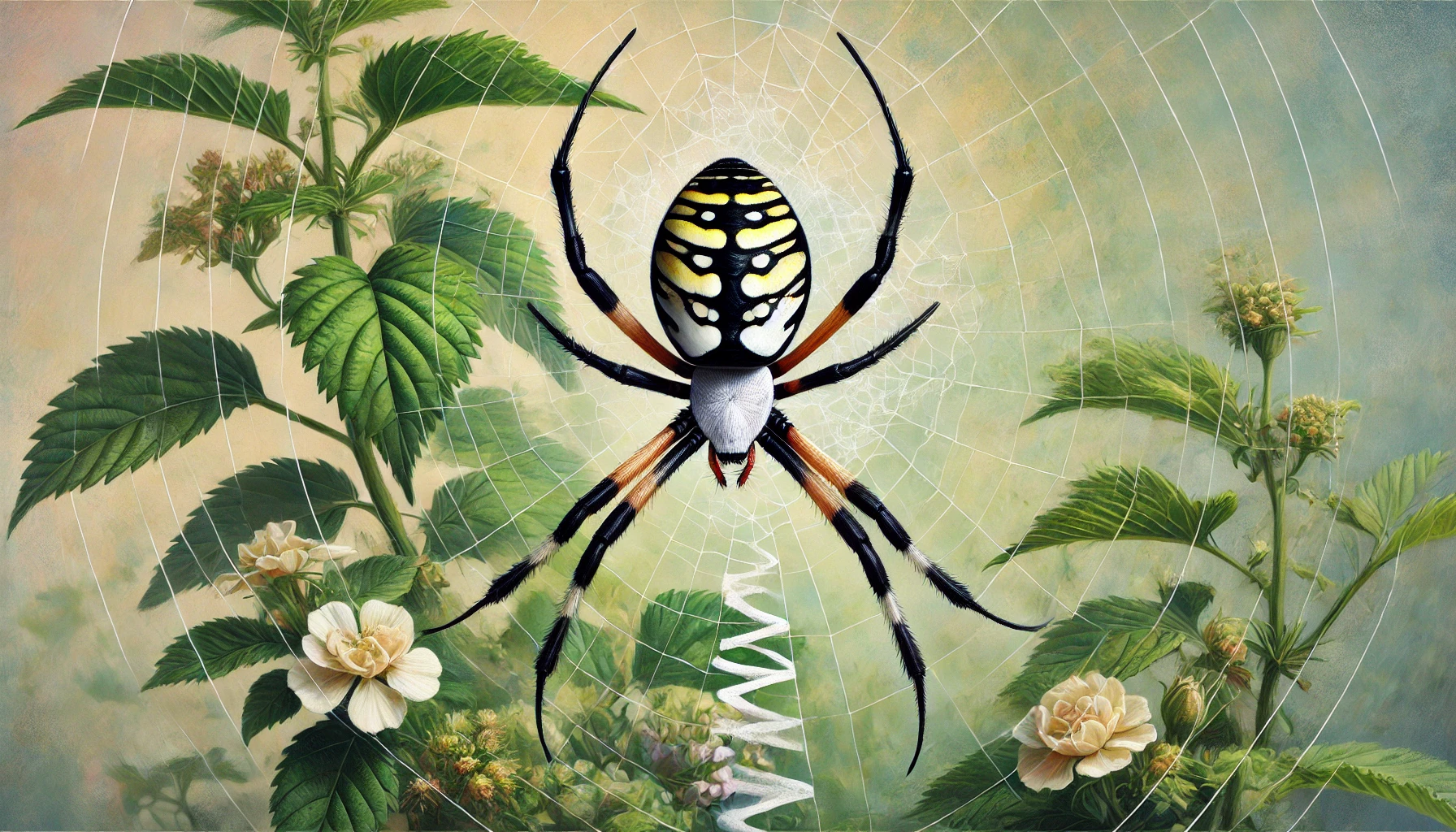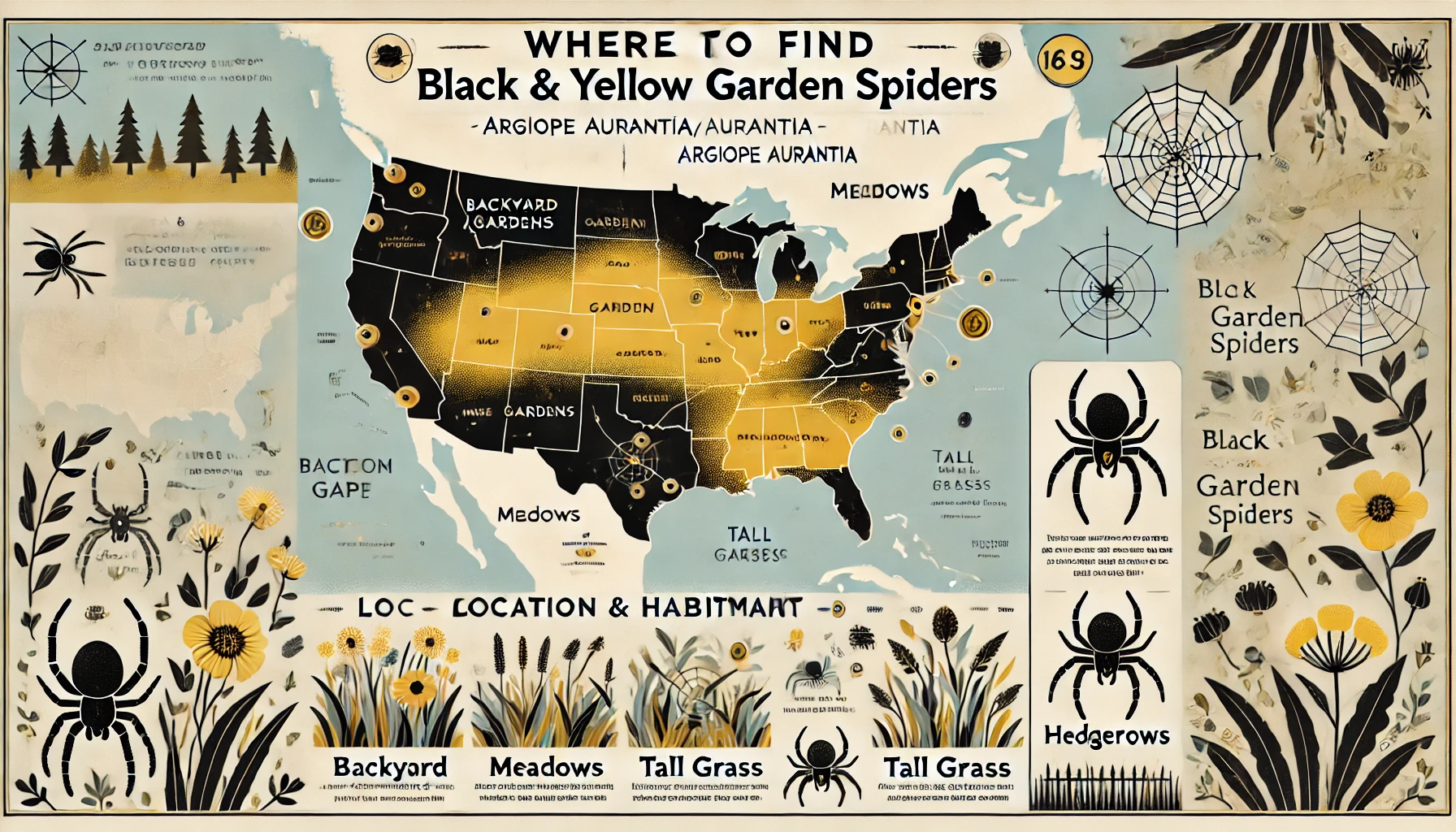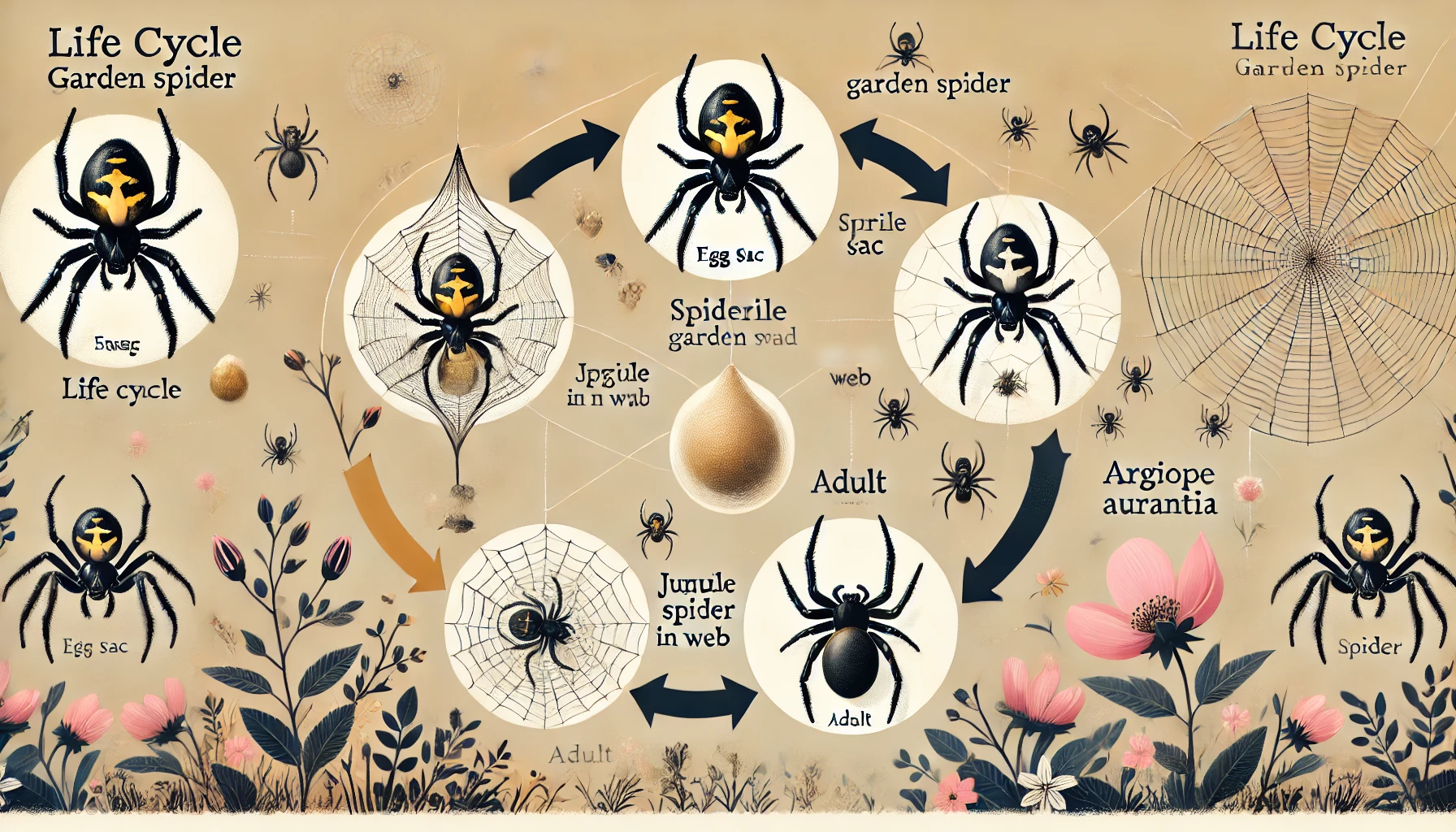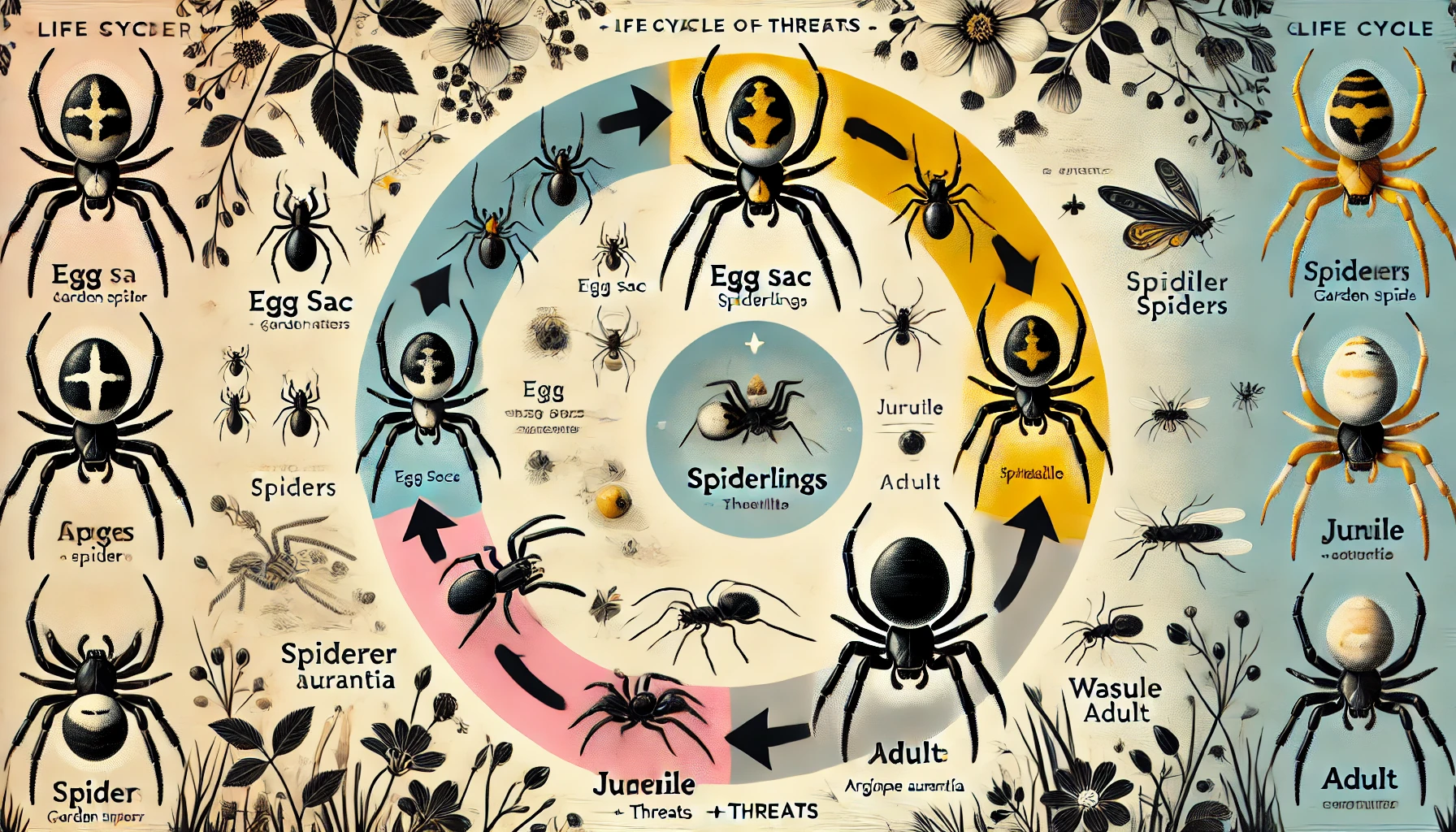Key Takeaways
- Black and yellow garden spiders are harmless to humans and pets. Their venom isn’t medically significant.
- Their large, zigzag-patterned webs indicate healthy insect activity and natural pest control in your garden.
- These spiders are seasonal and solitary, appearing in late summer and vanishing with the cold.
- They help control pests by feeding on flies, mosquitoes, beetles, and other insects.
- Chemical treatments aren’t needed—relocation or removing their webs usually works if they’re too close.
- Their presence is a sign of a balanced backyard ecosystem and healthier plants.
 Ever walked out into your garden, coffee in hand, only to find a massive spider suspended midair—dead center in a silky masterpiece that seems to stretch across the world (or at least your walkway)? And then your brain yells: What is THAT?!
You’re probably looking at a black and yellow garden spider. You know the one—bold yellow stripes, jet-black legs, sitting like royalty in the middle of a spiral web with a weird zigzag running down the middle.
Before you rush to grab a broom, take a second. Because this eight-legged guest might be doing you more favors than you realize.
Ever walked out into your garden, coffee in hand, only to find a massive spider suspended midair—dead center in a silky masterpiece that seems to stretch across the world (or at least your walkway)? And then your brain yells: What is THAT?!
You’re probably looking at a black and yellow garden spider. You know the one—bold yellow stripes, jet-black legs, sitting like royalty in the middle of a spiral web with a weird zigzag running down the middle.
Before you rush to grab a broom, take a second. Because this eight-legged guest might be doing you more favors than you realize.


Not getting a solution?
Get your free pest control estimate today!A Web Designer with a Flair for Drama
Let’s get it out of the way—these spiders look intense. The females are huge (we’re talking nearly an inch long) and showy, with legs that stretch far beyond what feels reasonable for a backyard critter. Their signature look?- Black and yellow abdomen, kind of like they’re dressed for a hazard zone.
- Long, banded legs—like they’ve been dipped in charcoal and orange.
- And that silvery, almost alien-looking head area? That’s just her being fancy.
But Is It Dangerous?
Short answer? Nope. Longer answer: Okay, yes, it’s a spider and has venom—but it’s not the kind that’s out to ruin your day. These spiders aren’t aggressive. They’re kind of shy. Bump into their web, and they’re likelier to play dead or drop to the ground like they’ve fainted. Dramatic exit, stage left. They might bite if you really bother them—like poke them, trap them, or try to hold them. But the result is… mostly underwhelming. A mild pinch. Maybe a slight swelling. Think: mosquito bite that took itself too seriously. That’s about it. Your pets? Fine. Dogs and cats are too big to be considered food, and these spiders don’t want anything to do with them. Your golden retriever is likelier to step on a chew toy that bites back than get nipped by one of these.
The Spider’s Not Just Crashing the Party—She’s Working
Here’s the thing: this spider isn’t lounging around being creepy for fun. She’s on duty. Black and yellow garden spiders are obsessed with bugs—flies, mosquitoes, beetles, grasshoppers. You name it. If it’s buzzing and bugging you, she’s on it. She doesn’t chase them down, either. She’s a trap-setter, a snare specialist. The kind of hunter that waits patiently and then—bam!—wraps her meal in silk before you’ve even blinked. It’s like having a natural, 100% eco-friendly pest control system working round the clock, rent-free. And she never once complained about the HOA rules.
How She Got Here (And Why She Won’t Stay Forever)
Most folks spot these spiders in late summer or early fall when they’ve grown big enough to be impossible to ignore. But her story starts way back in the spring. Hundreds—yes, hundreds—of baby spiders hatch from a papery egg sac. They balloon into the wind on silky threads (yes, like that scene from Charlotte’s Web), and most of them don’t make it. Nature’s tricky like that. But the ones that do survive grow steadily, moulting through the weeks, hiding in smaller webs, and gradually acquiring their bold adult colours. Then, they find a sunny spot, spin their giant web, and settle in. By October’s hit, she’s probably laid her batch of eggs in another papery sac—carefully stashed on a nearby plant or tucked under an eave. Then, like a fading summer song, she’s gone with the cold. Come spring, the next generation emerges. And the cycle spins again.When She’s Too Close for Comfort
- Let’s be honest—while these spiders are harmless, not everyone wants them hanging directly in their face when they step out to get the mail. So what do you do?
You don’t need to nuke the yard with chemicals. Instead:
-
Relocate Her Gently: Use a broom, stick, or rake to encourage the spider to move to a new spot about 10 feet away.
-
Remove the Web: Take down the web early morning or late evening when the spider is less active. Repeated removals usually encourage relocation.
-
Seal Up Doors and Windows: Prevent indoor surprises by checking window screens and sealing gaps—especially in the fall when they might wander in accidentally.

Garden Status: Upgraded
Once you get used to her being around, you might find her… kind of mesmerizing. That web? It’s an engineering marvel. The stabilimentum? Scientists still don’t agree on what it’s for. Some say it reflects UV light to attract bugs. Others think it warns off birds or helps strengthen the web. Either way, it’s gorgeous in the morning dew. Some people even give their garden spiders names. (We’re not judging. “Webigail” and “Charlene” are popular choices, apparently.)Nature’s Little Reminder
Look, not everything in the backyard needs to be cute and fluffy. Sometimes, beauty comes in a form that makes your skin crawl at first glance. The black and yellow garden spider might look scary, but she’s not here to bother you. She’s here to work—quietly, efficiently, and with way more style than we usually give her credit for. So the next time you see her poised in the center of her web , don’t panic. Maybe take a second. Watch how she moves. Notice how perfect that web is. She’s not your enemy. She’s just… busy. If you feel things have gone out of control, it is advised to contact pest control professionals. Our team can provide a customized approach to protect your home effectively.Visit our Species, Control, and DIY Guide sections for additional resources on spiders and ways to tackle a spider infestation.





